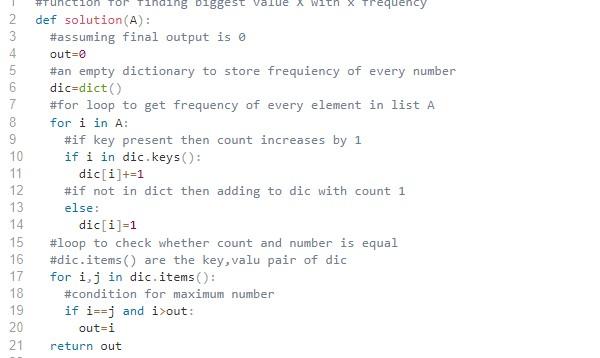Question
Please edit the following code to have O(n). Currently, it is at O(n^2) and I need to reduce it to O(n). You can also paste
Please edit the following code to have O(n). Currently, it is at O(n^2) and I need to reduce it to O(n). You can also paste another solution that is O(N). Paste the edited code and highlight what was changed. If you meet all conditions I will give thumbs up.

#function for finding biggest value X with x frequency
def solution(A):
#assuming final output is 0
out=0
#an empty dictionary to store frequiency of every number
dic=dict()
#for loop to get frequency of every element in list A
for i in A:
#if key present then count increases by 1
if i in dic.keys():
dic[i]+=1
#if not in dict then adding to dic with count 1
else:
dic[i]=1
#loop to check whether count and number is equal
#dic.items() are the key,valu pair of dic
for i,j in dic.items():
#condition for maximum number
if i==j and i>out:
out=i
return out

Step by Step Solution
There are 3 Steps involved in it
Step: 1

Get Instant Access to Expert-Tailored Solutions
See step-by-step solutions with expert insights and AI powered tools for academic success
Step: 2

Step: 3

Ace Your Homework with AI
Get the answers you need in no time with our AI-driven, step-by-step assistance
Get Started


